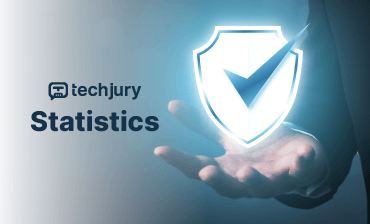Understanding the Modern Cybersecurity Ecosystem
In the intricate world of digital defense, cybersecurity has transcended its traditional boundaries, emerging as a critical strategic imperative that touches every aspect of our interconnected existence. What was once a specialized technical domain has now become a complex, dynamic battlefield where organizations, governments, and individuals engage in a perpetual dance of protection and vulnerability.
The digital landscape is no longer a passive environment but an active ecosystem where technological sophistication meets human ingenuity. Cybersecurity professionals are the unsung guardians of our digital realm, continuously adapting to an ever-evolving threat landscape that grows more complex with each passing moment.
The Economic Magnitude of Cyber Threats
Consider the staggering economic implications of cybercrime. Projections suggest that by 2025, global cybercrime will cost approximately [10.5 trillion] annually—a figure that surpasses the economic output of many developed nations. This isn‘t merely a statistical projection but a stark representation of the potential systemic disruption facing our global digital infrastructure.
The Evolving Nature of Cyber Threats
Beyond Traditional Malware: A New Generation of Attacks
Contemporary cyber threats have dramatically transformed from simplistic malware and rudimentary phishing attempts. Today‘s threat actors are sophisticated digital strategists who leverage advanced technologies and complex psychological manipulation techniques.
Advanced Persistent Threats (APTs) represent the pinnacle of modern cyber warfare. These are not random attacks but meticulously planned, long-term intrusion strategies often backed by nation-states or well-resourced criminal organizations. They possess the capability to penetrate even the most robust security architectures, moving silently through networks and extracting sensitive information over extended periods.
Artificial Intelligence: A Double-Edged Sword
The emergence of AI-powered cyber attacks has introduced an entirely new dimension to digital threats. Machine learning algorithms can now:
- Automatically discover system vulnerabilities
- Generate hyper-realistic social engineering content
- Dynamically adapt attack strategies in real-time
- Predict and circumvent traditional defensive mechanisms
This technological arms race means that defensive strategies must evolve at an unprecedented pace, requiring continuous learning and adaptation.
Statistical Insights: Decoding the Cybersecurity Landscape
Breach Dynamics and Economic Impact
Recent research reveals alarming trends in cybersecurity breaches. The average time to detect a security breach is approximately six months—a window that allows threat actors to cause substantial damage. During this period, organizations remain vulnerable, with potential economic losses mounting exponentially.
The average cost of a data breach has reached [4.24 million], a figure that doesn‘t just represent financial loss but encompasses reputational damage, operational disruption, and potential long-term strategic consequences.
Industry-Specific Vulnerabilities
Different sectors exhibit unique cybersecurity challenges:
Healthcare remains particularly vulnerable, with 75% of organizations having experienced malware infections. The sensitive nature of medical data, combined with often outdated technological infrastructure, creates a perfect storm for potential breaches.
Small businesses, contrary to popular perception, are not immune. Approximately 43% of cyber attacks specifically target smaller organizations, exploiting their typically less sophisticated security frameworks.
The Human Factor: Psychological Dimensions of Cybersecurity
Understanding Human Behavior
Despite technological advancements, human behavior remains the most significant variable in cybersecurity. Startling statistics reveal that:
- 30% of U.S. users still open phishing emails
- 12% of those who open such emails subsequently engage with malicious links
- 65% of companies have employees who never change their passwords
These behaviors underscore a critical insight: technological solutions must be complemented by comprehensive human-centric training and awareness programs.
Future Trajectory: Emerging Trends and Predictions
Technological Frontiers
The future of cybersecurity will be characterized by:
- Advanced AI and machine learning in threat detection
- Quantum-resistant encryption methodologies
- Decentralized security architectures
- Enhanced regulatory compliance frameworks
Organizations that proactively invest in these emerging technologies will be better positioned to navigate the complex digital threat landscape.
Investment and Career Opportunities
The cybersecurity job market presents unprecedented opportunities. With 300,000+ unfilled positions in the United States and a projected 3.5 million unfilled roles by 2025, professionals in this domain can expect robust career prospects.
The average North American cybersecurity professional commands a salary of [134,800], reflecting both the critical nature of the role and the specialized skills required.
Conclusion: A Holistic Approach to Digital Defense
Cybersecurity is no longer a technical checkbox but a fundamental strategic imperative. Success in this domain requires a multifaceted approach that combines technological sophistication, continuous learning, human-centric training, and proactive threat intelligence.
As digital ecosystems become increasingly complex, the role of cybersecurity professionals will continue to evolve. They are not just defenders but strategic architects of our digital future—building resilient, adaptive systems that can withstand the most sophisticated threats.
The digital battlefield is dynamic and unforgiving. Those who understand its nuances, anticipate its challenges, and remain perpetually curious will be the true champions of our interconnected world.
